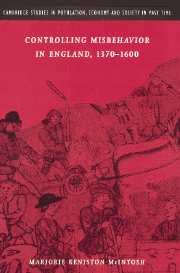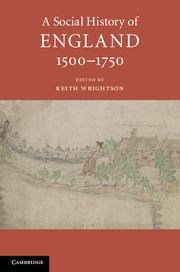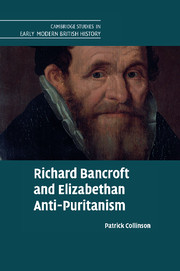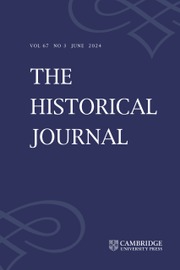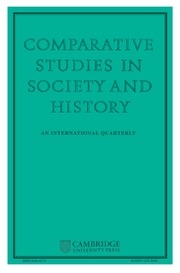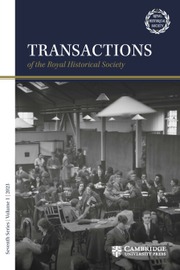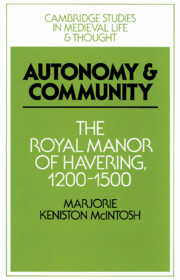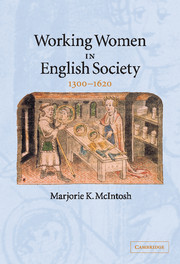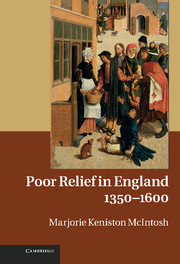Controlling Misbehavior in England, 1370–1600
In this important study, Professor McIntosh argues against the suggestion that social regulation was a distinctive feature of the decades around 1600, resulting from Puritanism. Instead, through an examination of 255 village and small-town communities distributed throughout England, Professor McIntosh demonstrates that concern with wrongdoing mounted gradually between 1370 and 1600. In an attempt to maintain good order and enforce ethical conduct, local leaders prosecuted people who slandered or quarrelled with their neighbours, engaged in sexual misdeeds, operated unruly alehouses, or refused to work. Professor McIntosh also explores who the offenders were as well as the factors that led to misbehaviour and shaped responses to it. More generally, Professor McIntosh sheds light on the transition from medieval to early modern patterns and succeeds here in opening up little-known sources and new research methods.
- Straddles the artificial gap between medieval and early modern studies
- Calls for a widening of the re-examination of Puritanism and what characterized the early modern period
- Uses an enormous amount of previously neglected archival material left by village and market town public courts
Reviews & endorsements
'… an extremely interesting and thought-provoking study …' Legal History
Product details
June 2002Paperback
9780521894043
312 pages
229 × 152 × 18 mm
0.46kg
8 maps 17 tables
Available
Table of Contents
- List of illustrations
- List of tables and lists
- Acknowledgements
- List of abbreviations
- Introduction
- Part I. The History of Social Regulation:
- 1. The forms of control
- 2. Methodological underpinnings
- 3. Social regulation in England's smaller communities
- 4. Social concern in other contexts
- Part II. Factors that Influenced Social Regulation:
- 5. Some political considerations
- 6. Social ecology I: 'broad response' and 'no response' communities
- 7. Social ecology II: analysis by type of offences reported
- 8. Ideological/religious influences
- Conclusion: social regulation and the transition from medieval to early modern England
- Appendices
- Bibliography
- Index.

